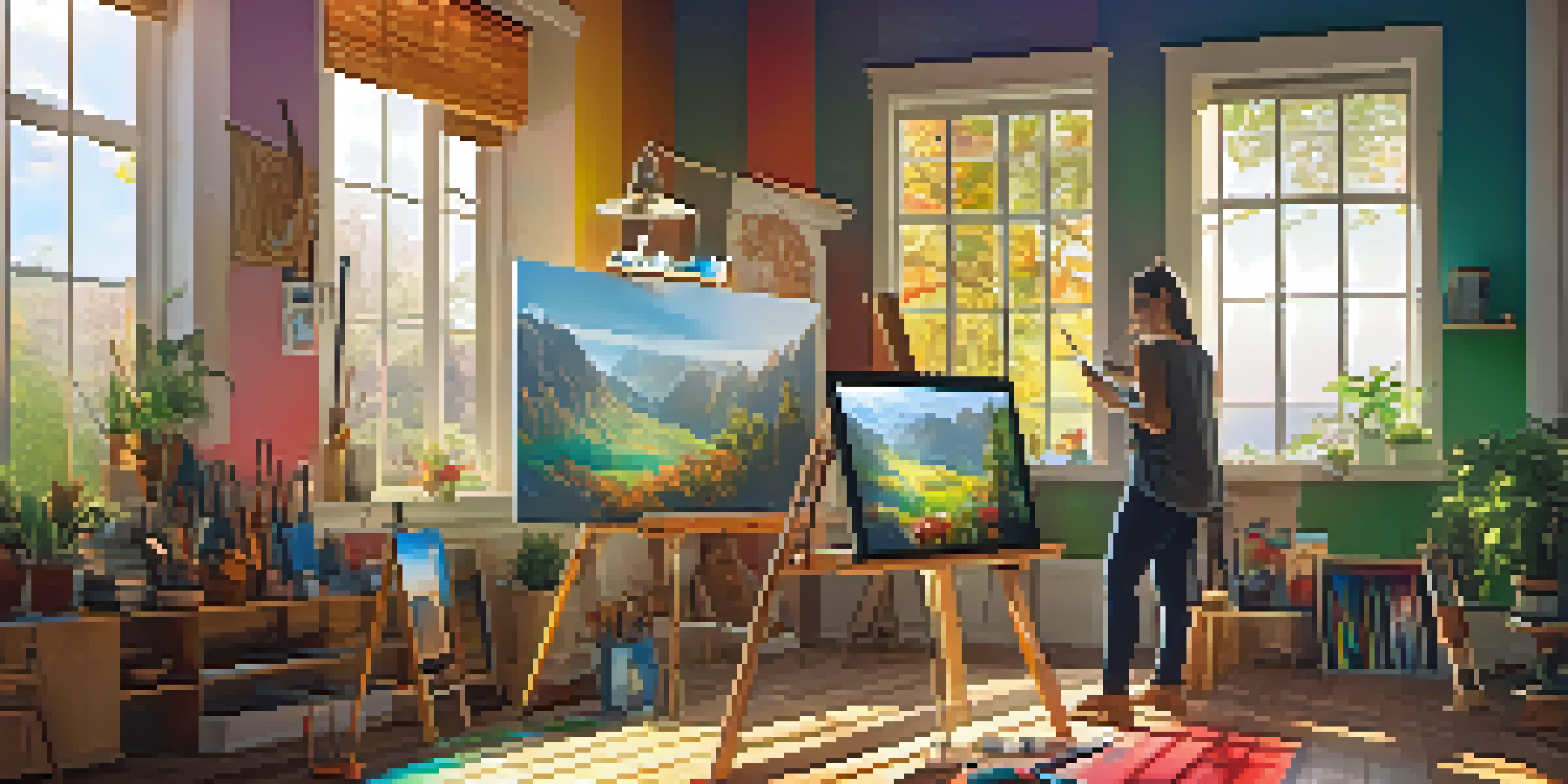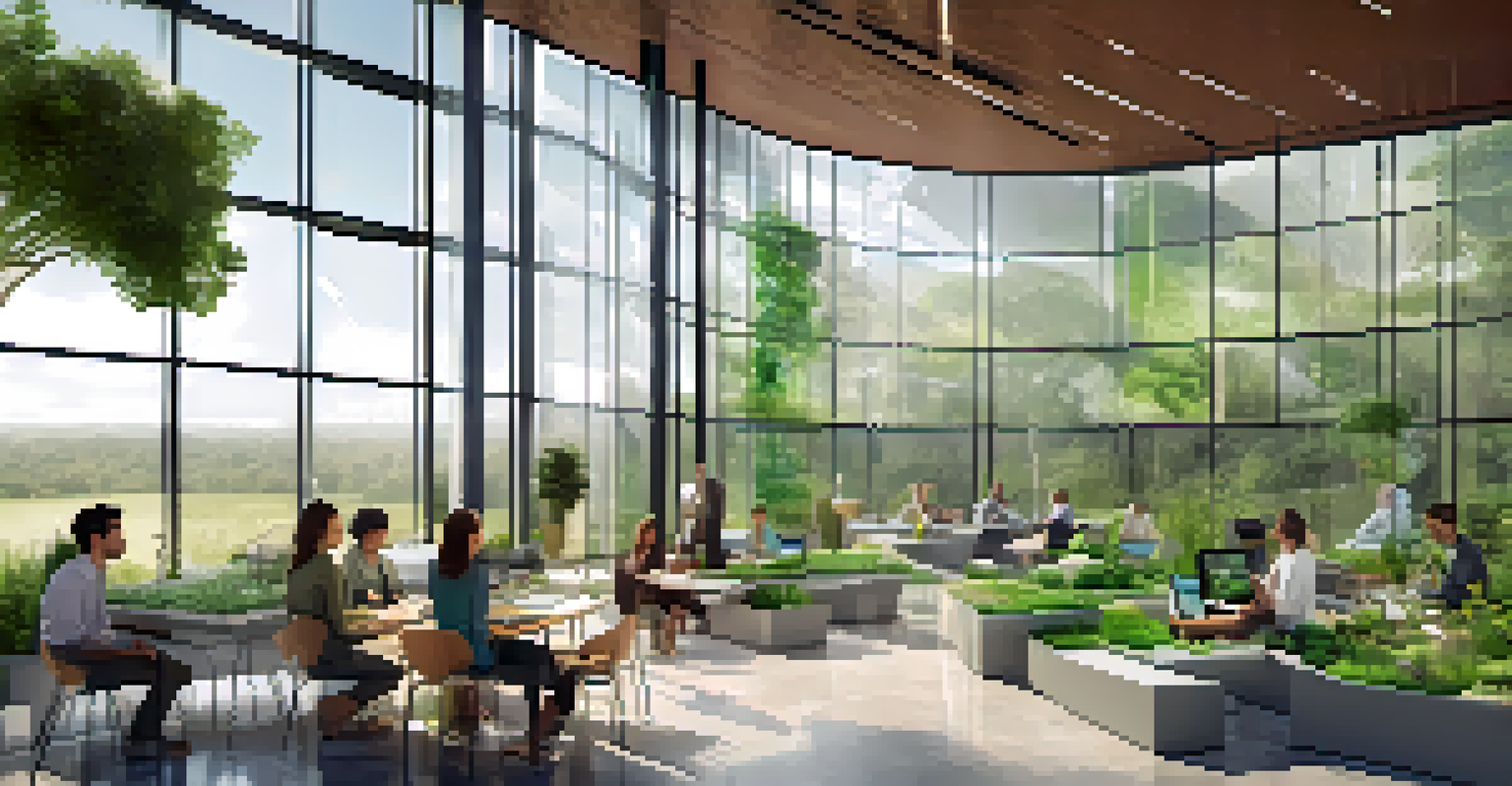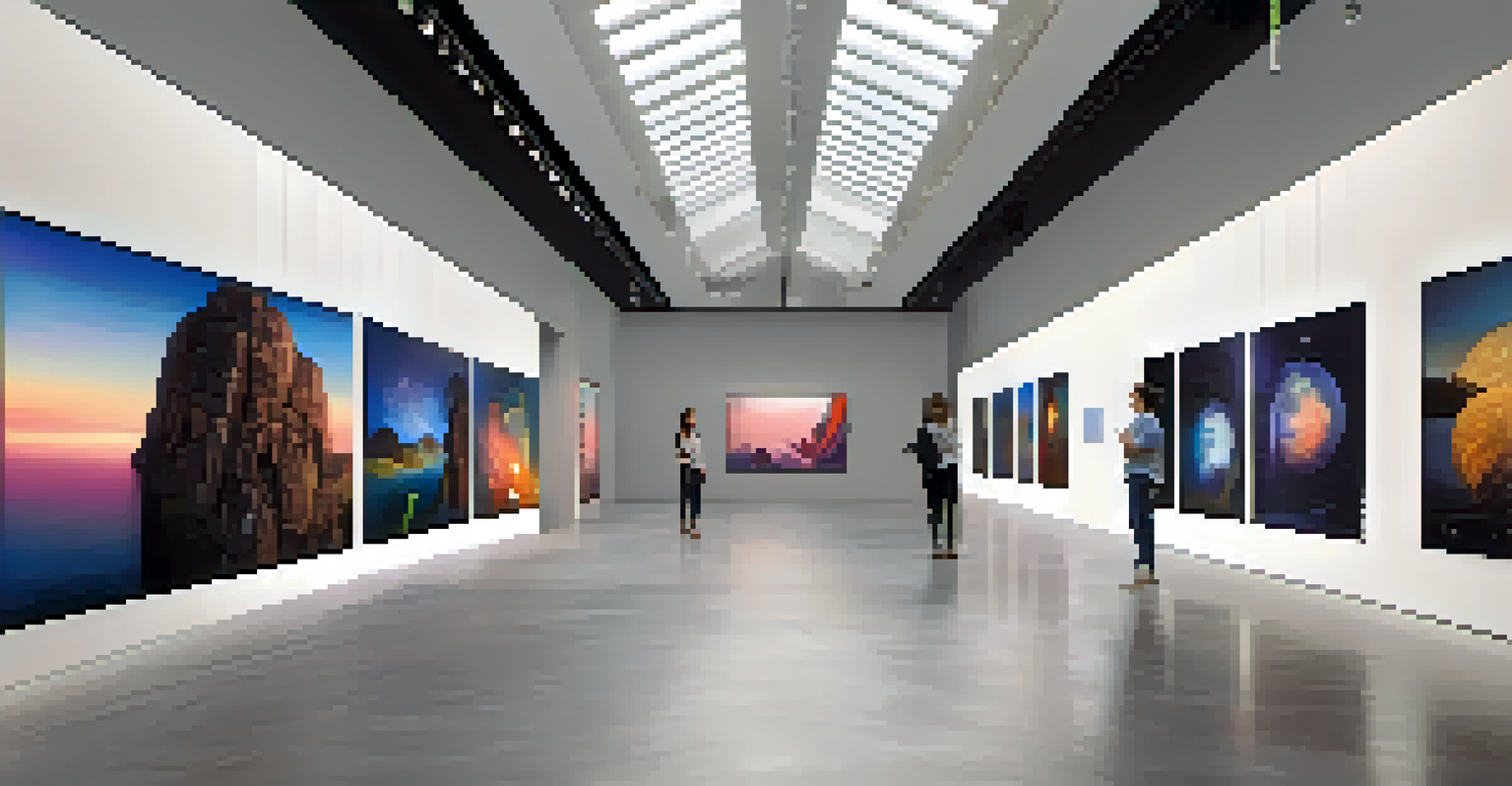Art and Architecture in the Digital Age: A New Era

The Intersection of Art and Technology in Modern Creativity
In today's world, art and technology are intertwined like never before. Digital tools have expanded the creative possibilities for artists, allowing them to explore new mediums and techniques. For instance, artists can now use software to create stunning visual art that was once only imaginable in dreams. This fusion not only enhances creativity but also broadens the audience's access to art.
Technology is best when it brings people together.
Moreover, technology enables collaboration across borders, connecting artists from different cultures and backgrounds. Imagine a painter in Paris working alongside a digital designer in Tokyo, creating a piece that reflects a blend of both their worlds. This global collaboration enriches the art scene, making it more diverse and dynamic.
However, this intersection also raises questions about authenticity and originality. As digital art becomes more prevalent, we must consider what it means to be an artist in the digital age. Are we witnessing the birth of a new art form, or is it merely a replication of traditional methods? These debates are vital as we navigate this evolving landscape.
Redefining Space: Architecture in the Digital Era
Architecture has also undergone a significant transformation with the advent of digital tools. Architects are now utilizing advanced software like 3D modeling to visualize designs before they are built. This not only streamlines the design process but also allows for more innovative and sustainable structures. Think of it as having a digital blueprint that can be adjusted in real-time, saving time and resources.

Additionally, augmented reality (AR) and virtual reality (VR) provide immersive experiences that redefine how we interact with architectural spaces. Imagine walking through a virtual recreation of a building that hasn't even been constructed yet! This technology enables clients to experience spaces before they are realized, leading to informed decisions and enhanced satisfaction.
Art and Tech: A Creative Fusion
The integration of digital tools has revolutionized artistic expression, allowing for new mediums and global collaboration.
However, this reliance on technology also prompts a discussion about the human element in architecture. While digital tools facilitate creation, they can sometimes overshadow the artistry and craftsmanship that define great architecture. Balancing technology with traditional methods may be the key to preserving the soul of architectural design.
Digital Art Platforms: A New Frontier for Artists
The rise of digital art platforms has revolutionized how artists showcase and sell their work. Websites and social media channels enable artists to reach a global audience without the constraints of traditional galleries. For example, an emerging artist can easily share their work on Instagram, gaining followers and potential buyers from around the world.
The arts are not a luxury, but a necessity for a healthy society.
Moreover, these platforms also foster community among artists and art enthusiasts. Online forums and groups allow for networking, collaboration, and feedback, creating a supportive environment for creativity to thrive. This sense of community can be invaluable, especially for those just starting their artistic journeys.
However, while digital platforms offer great opportunities, they also come with challenges. The sheer volume of content available can make it difficult for individual artists to stand out. Thus, developing a unique voice and a strong online presence becomes essential in navigating this crowded space.
The Role of NFTs in the Art World
Non-fungible tokens (NFTs) have emerged as a game-changer in the art world, allowing digital artists to sell their work as unique, collectible items. This technology ensures that ownership can be tracked and verified, providing artists with a new revenue stream. Imagine owning a one-of-a-kind digital artwork that no one else can claim; that's the power of NFTs.
Additionally, NFTs have sparked conversations about the value of digital art compared to traditional forms. While some argue that digital art lacks the physical presence of a painting or sculpture, others believe that the uniqueness of NFTs adds a new layer of value. This ongoing debate is reshaping perceptions of art in the digital age.
Sustainability in Art and Design
Digital technology offers innovative solutions for creating sustainable practices in both art and architecture.
However, the NFT space is not without its controversies, particularly regarding environmental concerns. The energy consumption associated with blockchain technology has raised eyebrows among sustainability advocates. As the art community navigates these challenges, finding a balance between innovation and environmental responsibility will be crucial.
Sustainability in Digital Art and Architecture
Sustainability is a pressing concern in both the art and architecture sectors, and digital tools offer promising solutions. For instance, architects can use simulation software to analyze energy efficiency and materials before construction begins. This technology enables them to create buildings that are not only aesthetically pleasing but also environmentally friendly.
In the realm of digital art, artists can adopt sustainable practices by utilizing eco-friendly materials and methods. Many are exploring ways to create art that raises awareness about environmental issues. For example, a digital artist may create a piece that highlights the impact of climate change, prompting viewers to reflect on their actions.
However, achieving sustainability in these fields requires a collective effort. Artists and architects must collaborate with technologists and environmentalists to implement effective solutions. By working together, they can create a new standard for sustainable practices in the digital age.
Cultural Preservation Through Digital Means
Digital technology is playing a crucial role in the preservation of cultural heritage. Museums and cultural institutions are increasingly using digital tools to catalog and showcase artifacts, making them accessible to a global audience. Imagine being able to explore ancient artifacts from your living room through an online exhibit; that's the power of digital preservation.
Furthermore, digital storytelling allows communities to share their cultural narratives in innovative ways. Through multimedia presentations, virtual reality experiences, and interactive websites, cultural stories can reach younger generations who may be more engaged with technology than traditional forms of media. This not only preserves culture but also revitalizes it for the future.
Cultural Preservation Through Digital
Digital platforms enable the preservation and sharing of cultural heritage, making it accessible to a broader audience.
However, there is a delicate balance to maintain when it comes to representation and authenticity. Digital preservation must be approached thoughtfully to ensure that cultural stories are told accurately and respectfully. Engaging with community members during this process is essential to honor the significance of their heritage.
The Future of Art and Architecture in a Digital Landscape
As we look to the future, the landscape of art and architecture will continue to evolve alongside technology. Innovations like artificial intelligence and machine learning are already starting to influence creative processes, leading to exciting possibilities. For instance, AI can analyze artistic trends and suggest design modifications, pushing the boundaries of creativity.
Moreover, the integration of technology into everyday life means that art and architecture will become even more interactive. Imagine walking into a building that responds to your presence or engaging with art that changes based on your emotions; this is the future that awaits us. Such advancements could redefine our experiences with both art and architecture.

However, with these advancements come responsibilities. As creators and consumers, we must advocate for ethical practices in the digital realm. By fostering a culture of innovation that respects both creativity and integrity, we can ensure that the future of art and architecture remains vibrant and meaningful.